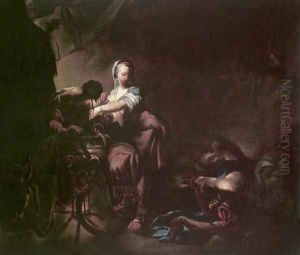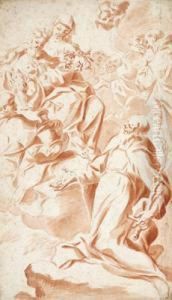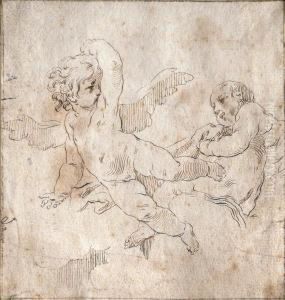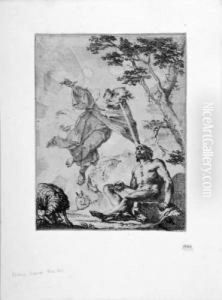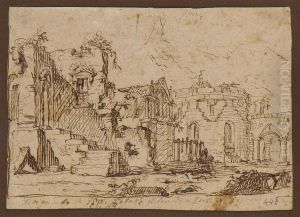Franz Xaver Palko Paintings
Franz Xaver Palko was a significant figure in 18th-century Central European art, particularly known for his contributions to baroque painting. Born in 1724 in Bratislava, which was then part of the Kingdom of Hungary (present-day Slovakia), Palko emerged from a family deeply entrenched in the arts. His father, Johann Palko, was also a painter, providing Franz Xaver with an early exposure to the world of art, which undoubtedly influenced his later career.
Palko's oeuvre is characterized by religious themes, a hallmark of the baroque period, with his works often imbued with dynamic compositions, vibrant colors, and a dramatic use of light and shadow. These elements combined to breathe life into biblical and mythological subjects, making his paintings compelling narratives of the divine and the human condition. He was particularly adept at fresco painting, a skill that led to numerous commissions for decorating churches and palaces across the Habsburg Empire.
Despite the prominence he achieved during his lifetime, Palko's work was, for a time, somewhat overshadowed by other baroque masters. However, recent scholarship has begun to reassess his contributions, highlighting not only his technical skill but also the emotional depth and spiritual fervor of his art. Palko's paintings are now considered key examples of Central European baroque painting, reflecting the vibrant cultural and spiritual life of the region during the 18th century.
Franz Xaver Palko's career was relatively short; he died in 1767 at the age of 43. Nevertheless, his artistic legacy has endured, with his works preserved in various museums and collections across Europe. They continue to be studied and admired for their artistic qualities and for the light they shed on the baroque era's complex interplay of art, faith, and society.
